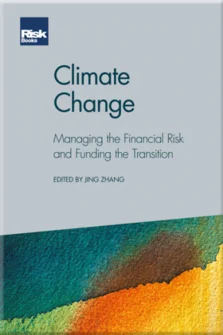Next-generation analytics for climate finance
Josh Gilbert and Gopal Erinjippurath
Foreword
Introduction
Sustainability for critical ecosystems: The future of risk management – more of the same or a new paradigm?
Climate change is a source of financial risk
The climate disclosure landscape in the finance sector
Green boxes? An overview of climate risk tools and analytics
Embedding climate change in financial metrics
Modelling climate physical risks
Climate-related stress-testing: Transition risks
Catastrophe risk modelling and climate change
Evidence-based climate stress testing
Climate risk drives a new paradigm in risk management
Incorporating climate change in asset allocation and portfolio construction
(Car)bon voyage: The road to low-carbon investment portfolios
Climate risk primer for community banks: Concepts and policies during a period of significant change
Next-generation analytics for climate finance
Climate finance post-COP26
Mobilising private funding
Global climate models and risk analytics have been developed and refined over decades, but rapid changes in the climate have led to increasing frequency and severity of climate-related events, causing billions in economic damages. However, since the 2010s technological advances have led to improvements in our monitoring and assessment of these risks. Satellite data, cloud computing and machine-learning capabilities have provided high cadence, high-quality climate data.
This chapter highlights the significance of these improvements in climate risk analytics for extreme climate events and greenhouse gas (GHG) emissions monitoring. The new generation of climate risk analytics has also broadened the applications for this data, across regulation, operational risk, and the creation of new climate-aware financial instruments, products and services. In this chapter, we present two specific dimensions in which next-generation analytics using geospatial techniques can be useful for climate finance. One dimension explores the need for more functional climate models when assessing physical climate risk exposure, while the other explores the use of satellite-derived techniques to assess
Copyright Infopro Digital Limited. All rights reserved.
As outlined in our terms and conditions, https://www.infopro-digital.com/terms-and-conditions/subscriptions/ (point 2.4), printing is limited to a single copy.
If you would like to purchase additional rights please email info@risk.net
Copyright Infopro Digital Limited. All rights reserved.
You may share this content using our article tools. As outlined in our terms and conditions, https://www.infopro-digital.com/terms-and-conditions/subscriptions/ (clause 2.4), an Authorised User may only make one copy of the materials for their own personal use. You must also comply with the restrictions in clause 2.5.
If you would like to purchase additional rights please email info@risk.net











